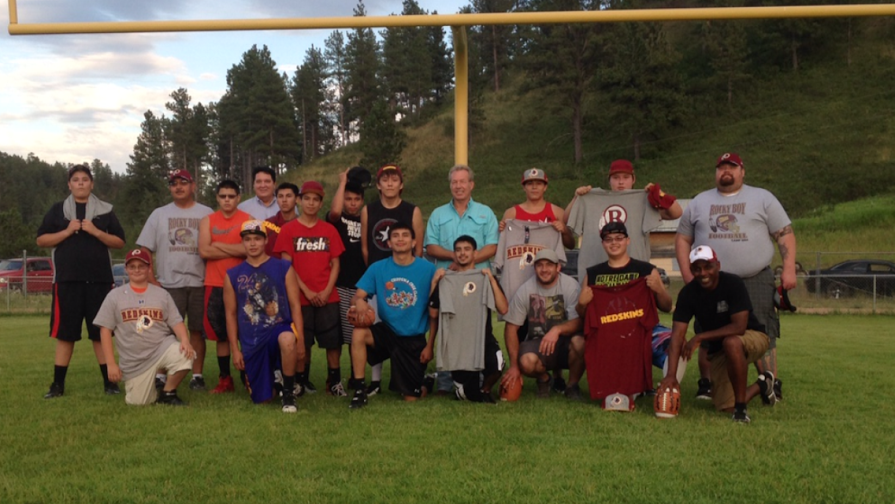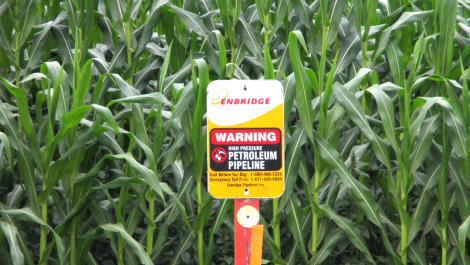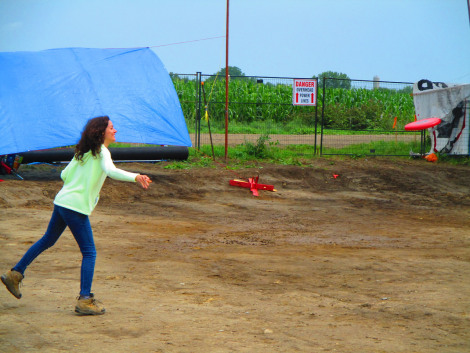Tulalip Job Ready program, an opportunity for Tulalip Tribal Members to earn certification that may be used in lieu of experience for certain job requirements, along with other skills provided during the program
Author: Kim Kalliber
King County holds disaster exercise for oil train derailment, explosion
By Graham Johnson, KIRO 7 News
King County’s executive says the region is prepared for potential oil train disaster, but there remains a serious risk.
On Wednesday, Dow Constantine detailed results of the Puget Sound area’s first drill simulating an oil train derailment and fire.
On Tuesday, emergency responders gathered in an operations center to practice how they’d work together if a train were to derail and explode at a South Seattle rail yard.
A minor oil train derailment in Seattle last month and explosive disasters around the United States and Canada have focused attention on the danger of transporting Bakken crude.
“This is a new and significant risk for our people, our economy and our environment,” Constantine said.
Burlington Northern Santa Fe participated in the exercise.
The railroad said its responders would take the lead in extinguishing a fire on the tracks, and that the company also trains hundreds of local firefighters for disasters.
A BNSF spokesman estimated the Northwest now averages two and a half oil trains per day, and that 70 percent of the tank cars are of the newer, safer design.
Constantine said he is urging Congress to ban the use of older-style tank cars.
He also announced the formation of a group of regional elected leaders, the Safe Energy Leadership Alliance.
Because the federal government has oversight of the railroads, there’s little more he can do.
Northwest Considers Multi-State Approach To Federal Carbon Rules
By: Rob Manning, OPB
Power planners in the Northwest are considering a multi-state approach to federal carbon reduction rules.
The region’s clearest path to meeting carbon targets may come from the Northwest continuing its march toward energy efficiency.
Director of power planning at the Northwest Power and Conservation Council, Tom Eckman, says if those efforts continue to be successful – and if coal plants in Oregon and Washington close, as scheduled – carbon targets are attainable, across the region.
But efficiency at a state level could be tough for Montana. Its five coal plants generate lots of power for consumers in other states. Eckman says a multi-state alliance could spread the carbon burden.
“On the one hand, they have great advantages, by reducing the aggregate costs,” Eckman said. “But on the other, the institutional arrangements are not in place to make that happen. That would be a real lift.”
Eckman says such an alliance might need support form private utilities and the public Bonneville Power Administration.
Tulalip Health Watch’s “Diabetes” examines the disease and preventions
By Mike Sarich, Tulalip News
According to the U.S. Department of Health and Human Services and Indian Health Service, Native Americans are at a 2.2 times higher risk for diabetes than their non-Indian counterparts. Between 1994 and 2004 there was a 68 percent increase in diabetes diagnosis in American Indian and Alaska Native youth, aged 15-19 years old.
Tulalip Health Watch’s “Diabetes” examines what diabetes is, how it is diagnosed, and what your part is in preventing this disease, which has taken Indian country with epidemic proportions. Medical professionals from Tulalip Karen I. Fryberg Health Clinic provide information on testing, treatment, and prevention. Also, a tribal elder defines how diabetes has affected his life, and how he is proactive in the treatment of the disease.
Starting Monday, August 11th on Tulalip TV Channel 99, and streaming on TulalipTV.com
10:30am
7:30pm
1:30am
SNAP Benefits Now Used to Purchase Local Food Directly from Farmers in More than 5,000 Locations
More than $21 Million in SNAP Benefits Used Last Year to Purchase Healthy Food and Boost Local Economies
Mark Moseley says ‘no red men have said anything derogatory to me’ about the Redskins name

By Dan Steinberg, Washington Post, August 5
Mark Moseley is one of the former Redskins players now engaged on the name issue, and he isn’t treading lightly when discussing this debate.
Moseley was on NewsChannel 8’s “SportsTalk After the Game” with Alex Parker this week, and the one-time kicker was fired up.
“It’s come up before, and it’s the most ridiculous thing that you could ever have” Moseley said of the debate. “We just thought it would blow over. But this time it hasn’t blown over. They’ve managed to get to some people that have a voice, some people with a little power, and they’ve made it into something that it’s not. And so we decided as alumni that we were going to get out and find out for sure. I mean, we don’t want to do something that’s hurting somebody’s feelings or it’s not the right thing … so we decided to take it upon ourselves to find out.
“I personally grew up with the Alabama-Coushatta Indians down in Texas,” Moseley went on. “They were 10 minutes outside of town. So I’ve been around Indians all my life, and when I came to the Washington Redskins it was elation in the reservation. They loved the fact that I was playing for the Indians. They considered it an honor.
“And so we were really upset with the fact that they’re trying to tell us that all these years we’ve been playing under a name that was derogatory to someone,” he said. “We’ve interviewed over a thousand people. We’ve talked to over a thousand Indians. And not one, not even one has said anything about it being derogatory to them. I even went up to one of them face-to-face that I didn’t even know, and I asked him, I said point blank, ‘If I came up and I called you a Redskin would you be insulted?’ And he said, ‘Absolutely not, I take great pride in being an American Indian, being called a Redskin.’ So to me, it’s bogus.”
Later, Parker asked Moseley what he thought about the people who have said they are offended by the name.
“If it was Indians, then I would be concerned,” Moseley said. “But everyone that’s said anything to me has been a white man or a black man. No red men have said anything derogatory to me about it.”
Parker also read Moseley some dictionary definitions indicating the word could be offensive.
“You can get offended by anything,” Moseley said. “I can get offended by what somebody’s saying to me. But the Redskins, if we start changing, to me they’re attacking my amendment rights that I have. To me, the name Redskins is something that does not offend anybody. The Redskins are not being hurt, the Indians are not being hurt by this, they’re telling us that. I mean, are we going to believe the white man or are we going to believe the Indian when it comes to a subject that is supposedly affecting them? They’re the ones we need to listen to. We need to pay attention to what they’re saying, and not what some of these other people are saying, and listen to where their hearts are.”
Moseley also said that “all these reservations, almost 90 percent of them have an organization on their reservation called the Redskins, that use that as their rallying cry. Schools, almost every reservation has a school that has an organization on it called the Redskins.”
I don’t believe that’s actually true, although there certainly are several majority-Native American schools that use the name. Moseley also said some good has come out of the debate, because “we’ve found out how really deplorable” the conditions are for some Native Americans.
“And it’s ridiculous that we as Americans are letting them and making them, almost forcing them to have to live this way,” he said. “It was very much an eye-awakening trip for those of us that have not been on a reservation in a while.”
As for the suggestion that the Redskins were buying support on reservations, Moseley rejected that outright.
“The fact is that they need help and we’re giving it to them,” he said. “And we’re not trying to buy [them]. We talked to people before we even did anything for them, and we got the same answer. So that’s bogus. That doesn’t even come into the ballgame here. But we as alumni feel that it’s important that we make sure that if we’re going to follow this, and if the Redskins are going to continue to be called the Redskins, we need to make sure — and Mr. Snyder wanted to make sure — that no one is being hurt. And we found out that they’re not.
“I really get upset. I get mad, because people are trying to say that I’ve been using a racist name,” he said.
Cariboo Regional District declares state of emergency after Mount Polley mine tailings pond breach in B.C.
Gordon Hoekstra, Tara Carman, Postmedia News | August 6, 2014 11:25 AM ET

The millions of cubic metres of water that poured out of Mount Polley mine when the dam collapsed had failed provincial water quality guidelines for human and aquatic health in the past, according to the B.C. environment ministry and early Wednesday the Cariboo Regional District declared a state of local emergency.
Data sent to the ministry by Mount Polley as recently as Monday showed that selenium concentration exceeded drinking water guidelines by a factor of 2.8 times.
There have also been drinking water exceedances of sulphate over the last few years, according to information supplied to The Vancouver Sun by environment ministry spokesman Dave Crebo.
Aquatic water guidelines have also been exceeded in the past for nitrate, cadmium, copper and iron.
Al Richmond, of the Cariboo Regional District, said water tests were being expedited and results are expected by Thursday.
The Regional District declared a state of local emergency early Wednesday. The move will allow access to additional resources that may be needed to further protect the private property and government infrastructure in Likely.
The release of 10 million cubic metres of water — enough to fill B.C. Place more than four times — is also potentially contaminated with toxic metals such as arsenic and mercury, a concern for hundreds of area residents’ water supply and important salmon habitat.
According to 2013 data the company released to Environment Canada on disposal of chemicals, Mount Polley mine disposed of almost 84,000 kilograms of arsenic and its compounds through tailings last year, as well as about 1,000 kg of cadmium, 38,000 kg of lead and 562 kg of mercury.
Mount Polley, operated by Imperial Metals, is an open-pit copper and gold mine with a four-kilometre-wide tailings pond built with an earthen dam located in central B.C., west of Williams Lake and near the community of Likely.
Provincial officials are conducting tests of water samples from the area. Until results come back, the severity of the contamination remains unknown and a drinking water ban remains in effect for about 300 people in the immediate vicinity.
Imperial Metals president Bryan Kynoch apologized to Likely-area residents gathered at a community hall Tuesday afternoon, and said the company would do all it could to make right the effects of the dam collapse. “I know it’s going to take a long time to earn the community’s trust back,” he said. “This is a gut-wrenching experience, I know for you, but I can assure you it is for me.”

Making it right includes reclaiming the environment, but also compensating in areas such as potential tourism business losses, he said.
More than 150 townspeople crowded into the hall to hear from Kynoch, provincial Mines Minister Bill Bennett and regional district officials.
Kynoch said he did not know why the dam collapsed, but acknowledged it is not supposed to happen.
He said he believed there was not likely to be danger to people, fish and animals.
Asked if he would drink the water, Kynoch shot back: “Yes, I’d drink the water.”
The company would soon have boats in the water to ensure that the debris did not reach the bridge in the community, Kynoch added.
Related
He said he couldn’t say whether the mine would reopen, but noted that he would do all in his power to ensure it did.
Al McMillan and Judy Siemens were skeptical about Kynoch’s assurances there was likely to be no serious effects from the tailings spill. They and their pets are suffering from the water ban, and are concerned the slurry spilled into Hazeltine Creek will pose a problem over time, as it could bleed into the lake during rains.
McMillan took his aluminum boat to view where the creek spilled debris into the lake, and said the water made a sizzling, fizzing sound similar to when a pop is opened, which he believes were substances in the water reacting to his boat.
“I’ve seen five or six fish float by my dock, and a family of otters were feeding on them. What’s going to be the effect on them?” he asked.
Anthony Mack of the Xatsull First Nation spoke up at the meeting, questioning Kynoch’s belief the tests would show the environment was not harmed. In an interview, he said they will be conducting their own tests. “We do not trust industry or government,” said Mack.
Imperial Metals said early water tests are encouraging, with no mercury detected and arsenic levels about one-fifth of drinking water quality.
Suspended in the water is another 4.5 million cubic metres of fine sand, which contains the heavy metals.
Of these, the most hazardous to human and environmental health are arsenic, cadmium, copper, lead and mercury, said John Werring, senior science and policy adviser at the David Suzuki Foundation.
These are materials that are deemed “priority pollutants” by Environment Canada because they are known to be toxic, cause cancer, birth defects or genetic mutations and accumulate up the food chain, he said. Mercury and lead affect the nervous system.
“Understand that this stuff is washing into a big lake and it will dilute, but as it’s closer to the source, depending on the concentration of those chemicals, they can be lethal. It would be less lethal but still harmful the farther away you go and the longer it is put into the environment, there’s a greater opportunity that over time, the food chain will absorb it.”
The same applies to highly toxic non-metallic chemicals present in tailings that are used to separate metals during the mining process, but companies are not required to report amounts of these substances to Environment Canada, Werring said.
“These chemicals are there and I highly doubt that even now with the kind of water quality testing that’s going to be undertaken … they’re not even going to look for those.”
This is a serious incident that should not have happened
The cause of the breach, which occurred at 3:45 a.m. Monday, remains unknown. Mine personnel and instruments detected no indication of an impending breach, according to a statement from Imperial Metals.
Officials from the provincial Ministry of Energy and Mines are investigating the site at Mount Polley, Energy and Mines Minister Bill Bennett said in a statement Tuesday.
“This is a serious incident that should not have happened,” Bennett said Tuesday. “We are devoting every appropriate resource working with local officials to clean up the site, mitigate any impacts to communities and the environment, and investigate the cause of the breach. We will determine the cause of the event and we are determined to prevent an incident like this from happening again.”
In an interview in Likely, where Bennett spoke to the community, he said the last dam inspection was in September 2013. They also took a look at the dam’s water levels in May when the water was high, but found no problems, he said. “They’ve been in compliance,” said Bennett.
He said he expected to get water samples back in a day or two, which would be shared with the public.
The comprehensive investigation of the collapse would take longer, noted Bennett.

There remains a complete ban on drinking, swimming and bathing in the waterways surrounding the mine, including Polley Lake, Quesnel Lake, Cariboo Creek, Hazeltine Creek and the entire Quesnel and Cariboo Rivers systems right to the Fraser River.
The ban does not apply to people in Williams Lake or other towns along the Fraser.
Residents have been told not to allow pets or livestock to drink the water.
Likely resident Doug Watt said Tuesday that he was just starting to see the first debris from the breach float by his home on Quesnel Lake, where he gets all his drinking water.
Watt, whose water supply was cut off while his son, daughter-in-law and two small grandchildren were visiting on the weekend, stockpiled water from the lake as soon as they heard about the breach, knowing it would take several hours before any contaminants reached their area.
“We just filled up all sorts of containers.”
Watt said he is frustrated by a lack of information about water quality and availability. The first formal notice he received from authorities was a paper notice from the Cariboo Regional District taped to his door Tuesday morning warning people not to drink the water and directing them to the district’s Facebook page for more information, “which is fine if you have Internet. Many people don’t,” he said, noting that his Internet is unreliable.
“There’s a lot of confusion and I think a lot of people are very scared. People that are working at the mine have mortgages and kids to feed. They’re wondering what’s going to happen now … we can’t drink the water, but they don’t have the money to go buy the water.”
Important fish and wildlife habitat alongside Hazeltine Creek has been destroyed by the spill and is unlikely to recover as the fine sediment settles into the ground, Werring said. The full environmental impact won’t be known for decades, as animals that graze on any vegetation that grows back in the contaminated area will also be affected and the effects of toxins such as mercury is amplified as it accumulates up the food chain over time, he pointed out.
“Over a lengthy period of time, we can see long-term metal contamination of fish and wildlife in that area.”
We can see long-term metal contamination of fish and wildlife in that area
Consultants hired by local First Nations and mine owner Imperial Metals raised flags about the capacity of the tailings ponds as far back as 2011.
“The tailings pond was filling out and they needed to get rid of the water,” said consultant Brian Olding of the dam, which he described as “earthen.” “The walls were getting too high and the water was getting too high.”
In 2009, the mine applied to the B.C. Environment Ministry for a permit to discharge effluent into Hazeltine Creek. An amended permit was approved in 2012.
Watt, who worked at the mine as a metallurgist and shift supervisor nine years ago, said there were problems with the tailings ponds overflowing as recently as last winter, but the overflow was contained in retaining pools.
Werring, who is familiar with the environmental assessment process for mines, said tailings can be more safely managed by dehydrating them to make bricks, and then stacking them in such a way that water flow can be managed through them.
“It’s more expensive and it’s typically always written off,” he said.
Problem Gambling Program Family Night, August 21
Community Meeting, Healthy Hearts, August 12
Canadian protesters set up camp — politely — along Line 9 pipeline
By: Heather Smith, Grist

This morning, a group of protesters drove through the farm country of Kitchener, Ontario. They pulled up at a dirt-and-gravel-paved job site occupied by a security guard.
The guard knew the drill. While he phoned everyone who normally reported to the job site to tell them not to come in to work that day, the protesters set up camp. They posted a statement on Tumblr, inviting any interested parties to come and join them, along with guidelines for the occupation:
Here are some things to keep in mind while visiting the Dam Line 9 Action:
– We are on stolen Indigenous land. Deshkaan Ziibing (Antler River, so-called Thames River), Anishinabek territory.
– Have fun, but also remember that this is a site of struggle.
All summer, protesters have been appearing at job sites along the path of Line 9 — a pipeline that had lived in obscurity until the regulatory limbo surrounding the approval of Keystone XL made it famous. Enbridge, the Canadian company that owns Line 9, announced plans to expand it and to reverse its flow. Normally the pipe carries crude from Africa and the Middle East into Canada’s heart; Enbridge would like it to move oil from the Alberta tar sands to Quebec, where it could be refined and exported.
Line 9 is 38 years old, and crosses the path of every river that drains into Lake Ontario. But because it was already in the ground, it didn’t require the same standards of approval that a new pipeline would. The reversal was approved by Canada’s National Energy Board (NEB) last March, after several months of contentious public hearings, which adhered to a newly developed rule that required anyone who wanted to make a public comment to submit a 10-page application for approval first.
One of the protesters, Dan Kellar, was working on a PhD in environmental impact assessment and the application of environmental laws, so he was able to navigate the application process well enough to submit a comment, along with a group called Grand River Indigenous Solidarity. The NEB, unswayed, approve the pipeline anyway.
Then something unexpected happened. In June, the NEB ruled that the Chippewas of the Thames First Nation had not been adequately consulted on the portion of Line 9 that passed through their territory, which meant that they had the right to appeal the expansion. This was one of several rulings in the last few months that have greatly expanded First Nations power over what happens on Canadian soil.
Still, while the appeal works its way through the system, the NEB has allowed the retrofit to continue. That’s why the protests at various sites along the retrofit’s pathway have continued, too.
In this latest case, the work being stopped is a valve replacement, but most of the projects that the protesters have interrupted have been “integrity digs” — areas where Enbridge has dug up a section of the pipeline to check it for leaks.
Most of the occupations last for a few days, according to Rachel Avery, one of the protesters at the site. In this case, police told the protesters that they would be checking in on the site at 6 p.m., but gave no word as to whether they had plans to arrest anyone.
In the meantime, says Avery, there’s lots of stuff to do, like set up tents and shade structures, and install solar panels. There’s also plenty of time to educate curious passers-by about the hydrology of the local watershed.
That’s what the call-out to visit on Tumblr was about — kind of like a consciousness-raising group, but under threat of arrest. Why not turn your site occupation into an educational opportunity? It’s just another way, says Avery, “to build a stronger movement.”
As this report went to press, the protesters had settled in for a frisbee match.














